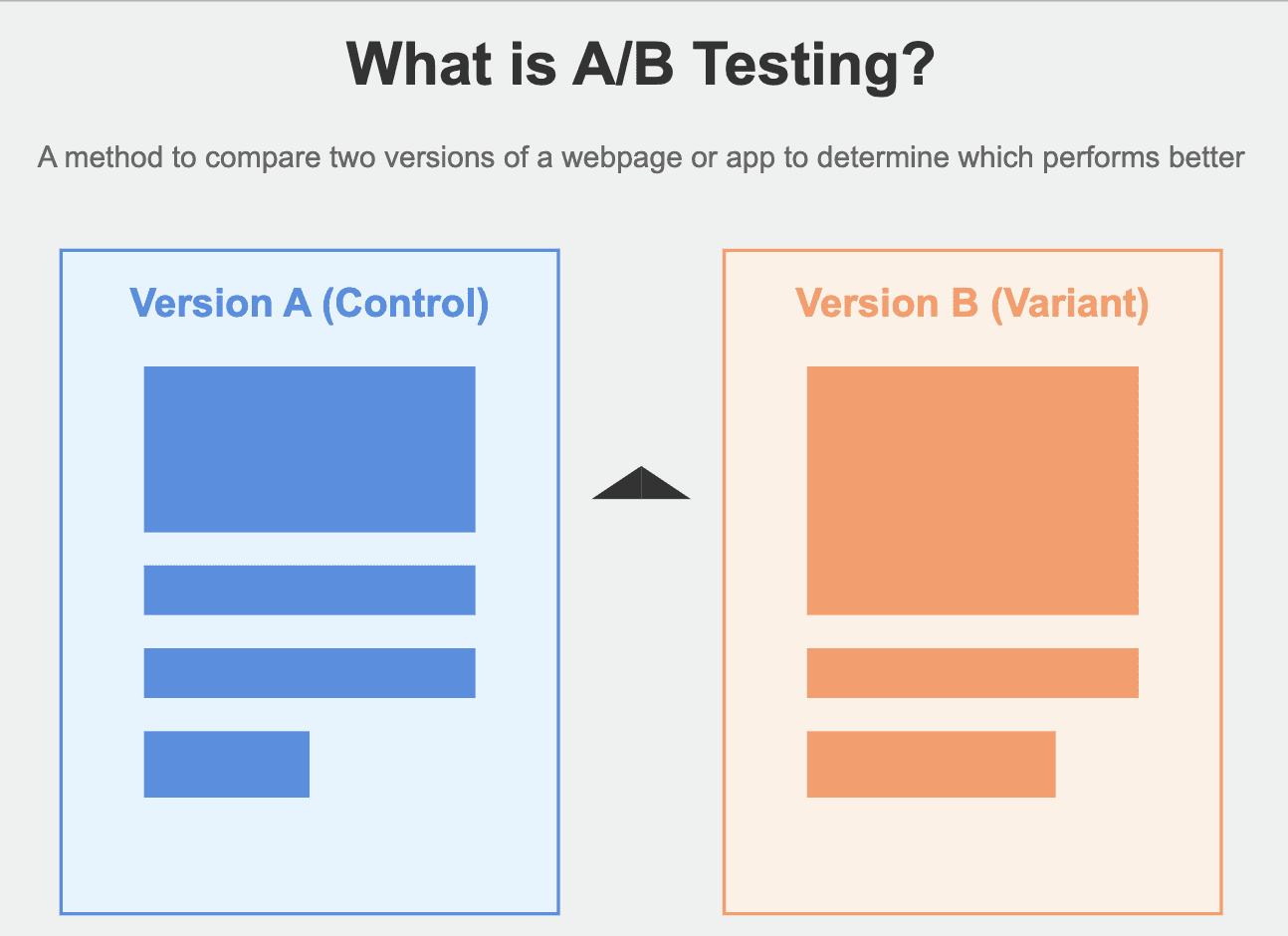
Heap vs Google Analytics for A/B Testing

by
Wiktoria Slowikowska
Oct 21, 2024
Identify and convert your most valuable users
Sign Up
Making data-driven decisions is crucial for business success. A/B testing stands at the forefront of this approach, allowing companies to optimize their digital presence based on real user behavior. Two popular analytics tools often used for A/B testing are Heap and Google Analytics. This blog post will dive deep into comparing these platforms, focusing on their A/B testing capabilities.
Understanding A/B Testing

Before we compare the tools, let's briefly review what A/B testing entails.
A/B testing, also known as split testing, is a method of comparing two versions of a webpage or app against each other to determine which one performs better. It's a cornerstone of data-driven optimization in digital marketing and product development.
How A/B Testing Works
Hypothesis Formation: Start with a hypothesis about how a change might improve user experience or conversion rates.
Variant Creation: Create two versions - Version A (Control) and Version B (Variant).
Traffic Split: Randomly divide your audience into two groups, each seeing one version.
Data Collection: Collect data on how users interact with each version.
Analysis: Analyze the results to determine which version performed better.
Implementation: Implement the winning version if it shows statistically significant improvement.
Now, let's explore how Heap and Google Analytics approach A/B testing.
Heap: Overview and A/B Testing Capabilities
Heap is an analytics platform that automatically captures all user interactions without requiring manual event tracking setup. It's known for its ease of use and powerful retroactive analysis capabilities.
Key Features for A/B Testing
Automatic Data Capture: Heap tracks all user interactions automatically, eliminating the need for manual event setup.
Retroactive Analysis: You can analyze past user behavior without setting up the test in advance.
Flexible Segmentation: Easily compare how different user segments respond to variants.
Real-Time Results: View test results as they come in, allowing for quick iterations.
Event Visualizer: Easily identify which elements users are interacting with most.
Pros of Using Heap for A/B Testing
Ease of Use: Minimal technical knowledge required to set up and analyze tests.
Comprehensive Data: Captures all user interactions, ensuring you don't miss any important data points.
Flexible Analysis: Can segment and analyze data in various ways after the test has run.
Cons of Using Heap for A/B Testing
Cost: Can be expensive for high-traffic websites.
Data Overload: The sheer amount of data collected can be overwhelming without proper management.
Google Analytics: Overview and A/B Testing Capabilities
Google Analytics is a widely-used web analytics service that tracks and reports website traffic. For A/B testing, it integrates with Google Optimize to provide robust testing capabilities.
Key Features for A/B Testing
Visual Editor: Easily create variants without coding (via Google Optimize).
Advanced Targeting: Target tests to specific user segments.
Multivariate Testing: Test multiple variables simultaneously.
Integration with Google Ads: Easily test and optimize ad campaigns.
Detailed Reports: Access a wide range of standard and custom reports.
Pros of Using Google Analytics for A/B Testing
Cost-Effective: Google Analytics is free, and Google Optimize offers a free version with robust features.
Integration: Seamless integration with other Google products and a wide range of third-party tools.
Familiar Interface: Many marketers are already familiar with Google Analytics.
Cons of Using Google Analytics for A/B Testing
Learning Curve: Can be complex for beginners, especially when setting up advanced tests.
Limited Data Collection: Only collects data you've specifically set up, unlike Heap's automatic collection.
Data Processing Delay: Typically has a 24-48 hour delay in data processing.
Head-to-Head Comparison
Let's compare Heap and Google Analytics across several key factors:
1. Ease of Use
Heap: Very user-friendly, requires minimal setup.
Google Analytics: Steeper learning curve, more complex setup process.
2. Data Collection
Heap: Automatic collection of all user interactions.
Google Analytics: Requires manual setup of event tracking.
3. A/B Testing Capabilities
Heap: Native A/B testing features with flexible analysis.
Google Analytics: Robust A/B testing through Google Optimize integration.
4. Reporting and Analysis
Heap: Intuitive drag-and-drop report builder with real-time data.
Google Analytics: Comprehensive standard reports with advanced custom options.
5. Cost
Heap: Free plan available, but paid plans can be expensive for high-volume sites.
Google Analytics: Free, with premium options available for enterprise-level needs.
Making the Right Choice
Choosing between Heap and Google Analytics for A/B testing depends on your specific needs:
Choose Heap if:
You want to capture all user interactions without manual setup.
You need the ability to analyze data retroactively.
You prefer a more user-friendly interface.
Choose Google Analytics if:
You're already using other Google products.
You need robust, free A/B testing capabilities.
You want access to a wide range of integrations and a large user community.
Conclusion
Both Heap and Google Analytics offer powerful A/B testing capabilities, each with its own strengths. Heap shines in its ease of use and comprehensive data collection, while Google Analytics offers robust testing features and seamless integration with other Google products.
Ultimately, the choice between Heap and Google Analytics for A/B testing should be based on your specific needs, technical expertise, existing tech stack, and budget. By understanding the strengths and limitations of each platform, you can make an informed decision that will help drive your data-driven optimization efforts forward.
Remember, the tool is just one part of the equation. Successful A/B testing also requires a solid understanding of your audience, clear objectives, and a commitment to continuous improvement. Whichever platform you choose, make sure to leverage its features fully to gain valuable insights and drive meaningful improvements in your digital presence.





